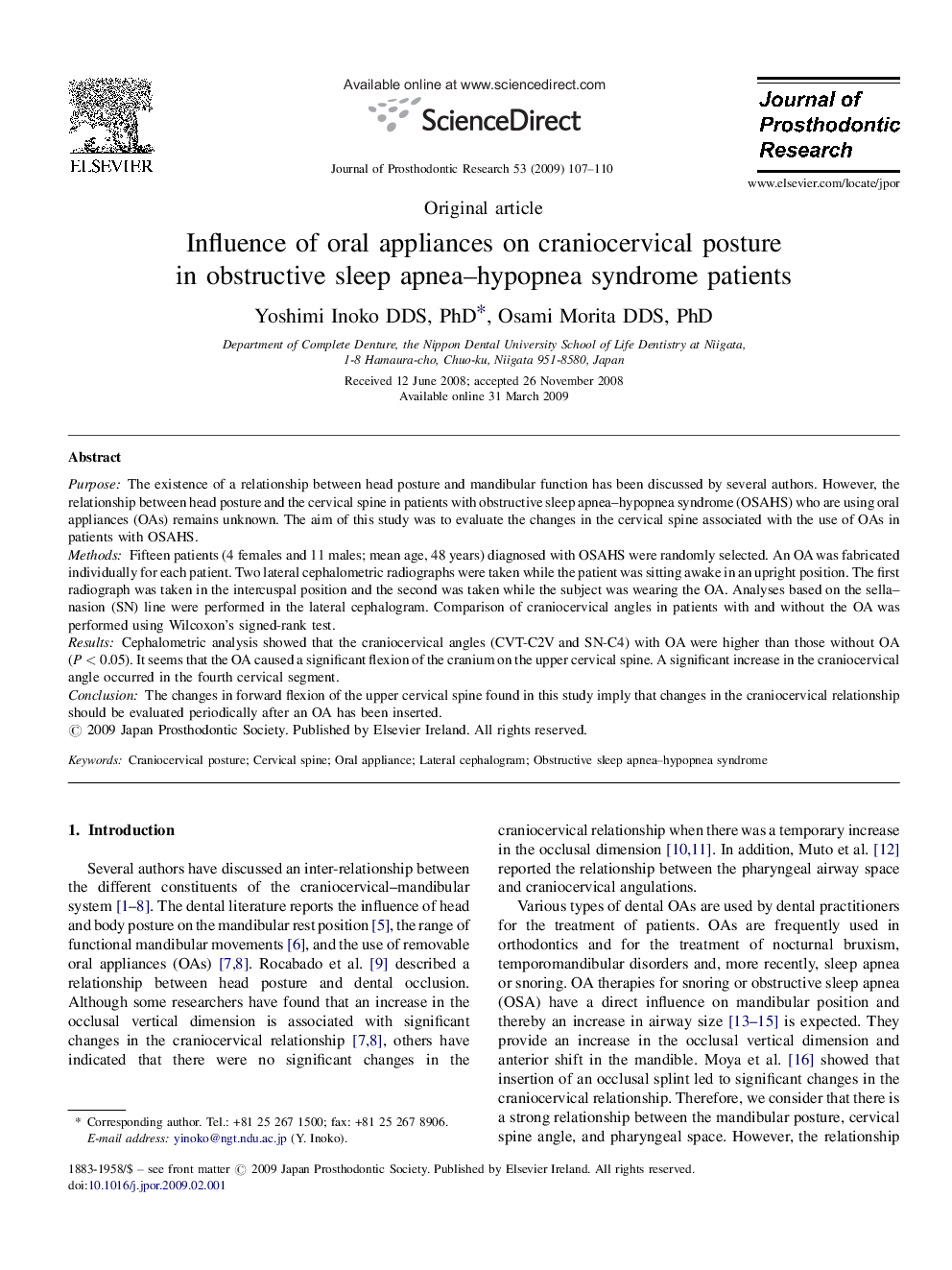| Article ID | Journal | Published Year | Pages | File Type |
|---|---|---|---|---|
| 3160770 | Journal of Prosthodontic Research | 2009 | 4 Pages |
PurposeThe existence of a relationship between head posture and mandibular function has been discussed by several authors. However, the relationship between head posture and the cervical spine in patients with obstructive sleep apnea–hypopnea syndrome (OSAHS) who are using oral appliances (OAs) remains unknown. The aim of this study was to evaluate the changes in the cervical spine associated with the use of OAs in patients with OSAHS.MethodsFifteen patients (4 females and 11 males; mean age, 48 years) diagnosed with OSAHS were randomly selected. An OA was fabricated individually for each patient. Two lateral cephalometric radiographs were taken while the patient was sitting awake in an upright position. The first radiograph was taken in the intercuspal position and the second was taken while the subject was wearing the OA. Analyses based on the sella–nasion (SN) line were performed in the lateral cephalogram. Comparison of craniocervical angles in patients with and without the OA was performed using Wilcoxon's signed-rank test.ResultsCephalometric analysis showed that the craniocervical angles (CVT-C2V and SN-C4) with OA were higher than those without OA (P < 0.05). It seems that the OA caused a significant flexion of the cranium on the upper cervical spine. A significant increase in the craniocervical angle occurred in the fourth cervical segment.ConclusionThe changes in forward flexion of the upper cervical spine found in this study imply that changes in the craniocervical relationship should be evaluated periodically after an OA has been inserted.
